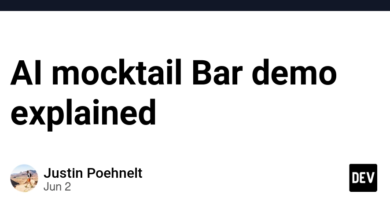ایجاد یک ژنراتور هنری پیکسل با گزینه صادرات: یک راهنمای گام به گام

Pixel Art یک شکل بی موقع از هنر دیجیتال است که ده ها سال است که سازندگان و گیمرها را به طور یکسان اسیر کرده است. این که آیا شما در حال طراحی Sprites برای یک بازی هستید یا فقط سرگرم کننده هستید ، یک ژنراتور هنری پیکسل می تواند ابزاری خارق العاده برای زنده کردن ایده های شما باشد. در این وبلاگ ، من شما را در طی مراحل ساخت ژنراتور هنری پیکسل با گزینه صادراتی این به شما امکان می دهد هنر پیکسل را بکشید و آن را به عنوان یک فایل PNG صادر کنید. من قبلاً برنامه را ساخته ام ، و می توانید آن را در اینجا امتحان کنید: Pixel Art Generator.

در زیر ، ساختار و عملکرد برنامه را با جزئیات توضیح می دهم و صاحبخانه ها را برای کد ترک می کنم. می توانید جای خالی ها را با کد HTML ، CSS و JavaScript ارائه دهید.
ژنراتور هنری پیکسل چه کاری انجام می دهد؟
Pixel Art Generator ابزاری مبتنی بر وب است که به کاربران امکان می دهد:
- نقاشی پیکسل در یک شبکه قابل تنظیم (16 16 16 ، 32 32 32 یا 64 64 64).
- رنگ ها را انتخاب کنید با استفاده از یک انتخاب کننده رنگ.
- استفاده کردن ابزار مانند پر کردن ، پاک کردن و پاک کردن کارهای هنری آنها.
- کارهای هنری نهایی را صادر کنید به عنوان یک فایل PNG.
این برنامه با استفاده از HTML ، CSS و JavaScript ساخته شده است و آن را سبک و آسان برای استفاده می کند.
ساختار برنامه
این برنامه از سه مؤلفه اصلی تشکیل شده است:
- HTML: ساختار برنامه را تعریف می کند.
- CSS: برنامه را برای جذاب کردن آن از نظر بصری جذاب کنید.
- جاذب: منطق نقاشی ، پر کردن ، پاک کردن و صادرات را بر عهده دارد.
بیایید هر مؤلفه را تجزیه کنیم.
1. ساختار HTML
پرونده HTML ساختار اصلی برنامه را از جمله بوم ، کنترل پنل و دکمه ها تنظیم می کند. این طرح کلی است:
lang="en">
charset="UTF-8">
name="viewport" content="width=device-width, initial-scale=1.0">
توضیح:
- در
section includes meta tags for responsiveness and links to the CSS file. - The
contains a container with a title, control panel, and canvas wrapper. - The control panel includes a dropdown for grid size, a color picker, and buttons for tools like Fill, Erase, Clear, and Export PNG.
- The canvas is where the pixel art is drawn.
2. CSS Styling
The CSS file styles the app to make it visually appealing and user-friendly. Here’s the outline:
:root {
--primary: #6c5ce7;
--secondary: #a29bfe;
--accent: #00cec9;
--dark: #2d3436;
--danger: #e17055;
}
* {
margin: 0;
padding: 0;
box-sizing: border-box;
font-family: 'Poppins', sans-serif;
}
body {
background: linear-gradient(45deg, #2d3436, #636e72);
min-height: 100vh;
display: flex;
justify-content: center;
align-items: center;
padding: 20px;
}
.container {
background: rgba(255, 255, 255, 0.95);
border-radius: 15px;
padding: 20px;
box-shadow: 0 10px 30px rgba(0, 0, 0, 0.2);
width: 100%;
max-width: 800px;
}
h1 {
text-align: center;
color: var(--dark);
margin-bottom: 15px;
font-size: 2em;
font-weight: 700;
background: linear-gradient(45deg, var(--primary), var(--accent));
-webkit-background-clip: text;
-webkit-text-fill-color: transparent;
}
.control-panel {
display: flex;
flex-wrap: wrap;
gap: 10px;
padding: 15px;
background: rgba(223, 230, 233, 0.6);
border-radius: 10px;
margin-bottom: 15px;
justify-content: center;
}
.custom-select {
padding: 8px 12px;
border: none;
border-radius: 8px;
background: white;
box-shadow: 0 2px 10px rgba(0, 0, 0, 0.1);
cursor: pointer;
transition: all 0.2s ease;
}
.custom-select:hover {
transform: translateY(-2px);
box-shadow: 0 4px 15px rgba(0, 0, 0, 0.15);
}
.color-input {
width: 40px;
height: 40px;
border: none;
padding: 0;
cursor: pointer;
border-radius: 50%;
box-shadow: 0 2px 10px rgba(0, 0, 0, 0.1);
transition: transform 0.2s ease;
}
.color-input:hover {
transform: scale(1.1);
}
.tool-button {
padding: 8px 15px;
border: none;
border-radius: 8px;
background: var(--primary);
color: white;
font-size: 0.9em;
font-weight: 600;
cursor: pointer;
box-shadow: 0 2px 10px rgba(0, 0, 0, 0.1);
transition: all 0.2s ease;
}
.tool-button:hover {
transform: translateY(-2px);
background: var(--secondary);
}
.tool-button.active {
background: var(--accent);
transform: scale(0.95);
}
.tool-button.danger {
background: var(--danger);
}
.tool-button.danger:hover {
background: #e55039;
}
.export-button {
padding: 8px 15px;
border: none;
border-radius: 8px;
background: linear-gradient(45deg, var(--primary), var(--secondary));
color: white;
font-weight: 600;
cursor: pointer;
box-shadow: 0 2px 10px rgba(0, 0, 0, 0.1);
transition: all 0.2s ease;
}
.export-button:hover {
transform: translateY(-2px);
background: linear-gradient(45deg, var(--secondary), var(--primary));
}
.canvas-wrapper {
padding: 15px;
background: rgba(223, 230, 233, 0.6);
border-radius: 10px;
display: flex;
justify-content: center;
max-width: 100%;
overflow: auto;
}
.pixel-canvas {
background: white;
border-radius: 8px;
box-shadow: 0 5px 20px rgba(0, 0, 0, 0.1);
max-width: 100%;
}
توضیح:
- در
:rootSelector متغیرهای CSS را برای رنگ های سازگار تعریف می کند. - در
bodyپیشینه شیب دارد و برنامه را در صفحه متمرکز می کند. - در
.containerمحتوای برنامه را نگه می دارد و دارای یک طراحی سایه دار و سایه دار است. - دکمه ها و ورودی ها به صورت تعاملی و بصری مجزا هستند.
3. منطق جاوا اسکریپت
پرونده JavaScript عملکرد اصلی برنامه را کنترل می کند. این طرح کلی است:
class PixelArtGenerator {
constructor() {
this.canvas = document.getElementById('pixelCanvas');
this.ctx = this.canvas.getContext('2d');
this.gridSize = 16;
this.pixelSize = 20;
this.color = '#000000';
this.isDrawing = false;
this.isFilling = false;
this.isErasing = false;
this.init();
this.bindEvents();
}
init() {
this.adjustCanvasSize();
this.clearCanvas();
}
adjustCanvasSize() {
const maxWidth = 700; // Reduced for condensed design
this.pixelSize = Math.floor(maxWidth / this.gridSize);
this.canvas.width = this.gridSize * this.pixelSize;
this.canvas.height = this.gridSize * this.pixelSize;
}
bindEvents() {
document.getElementById('gridSize').addEventListener('change', (e) => {
this.gridSize = parseInt(e.target.value);
this.adjustCanvasSize();
this.clearCanvas();
});
const colorPicker = document.getElementById('colorPicker');
colorPicker.addEventListener('change', (e) => {
this.color = e.target.value;
});
document.getElementById('fillTool').addEventListener('click', () => {
this.isFilling = !this.isFilling;
this.isErasing = false;
this.toggleToolState('fillTool', this.isFilling);
});
document.getElementById('eraseTool').addEventListener('click', () => {
this.isErasing = !this.isErasing;
this.isFilling = false;
this.toggleToolState('eraseTool', this.isErasing);
});
document.getElementById('clearBtn').addEventListener('click', () => {
this.clearCanvas();
});
this.canvas.addEventListener('mousedown', (e) => this.handleMouseDown(e));
this.canvas.addEventListener('mousemove', (e) => this.handleMouseMove(e));
this.canvas.addEventListener('mouseup', () => this.isDrawing = false);
document.getElementById('exportPNG').addEventListener('click', () => this.exportPNG());
}
toggleToolState(toolId, isActive) {
const btn = document.getElementById(toolId);
btn.classList.toggle('active', isActive);
}
getPixelCoordinates(e) {
const rect = this.canvas.getBoundingClientRect();
const x = Math.floor((e.clientX - rect.left) / this.pixelSize);
const y = Math.floor((e.clientY - rect.top) / this.pixelSize);
return { x, y };
}
drawPixel(x, y) {
this.ctx.fillStyle = this.isErasing ? '#ffffff' : this.color;
this.ctx.fillRect(x * this.pixelSize, y * this.pixelSize, this.pixelSize, this.pixelSize);
}
handleMouseDown(e) {
this.isDrawing = true;
const { x, y } = this.getPixelCoordinates(e);
if (this.isFilling) {
this.floodFill(x, y, this.ctx.getImageData(x * this.pixelSize, y * this.pixelSize, 1, 1).data);
} else {
this.drawPixel(x, y);
}
}
handleMouseMove(e) {
if (!this.isDrawing || this.isFilling) return;
const { x, y } = this.getPixelCoordinates(e);
this.drawPixel(x, y);
}
floodFill(x, y, targetColor) {
const currentColor = this.ctx.getImageData(x * this.pixelSize, y * this.pixelSize, 1, 1).data;
if (this.colorsMatch(currentColor, targetColor)) {
this.drawPixel(x, y);
if (x > 0) this.floodFill(x - 1, y, targetColor);
if (x < this.gridSize - 1) this.floodFill(x + 1, y, targetColor);
if (y > 0) this.floodFill(x, y - 1, targetColor);
if (y < this.gridSize - 1) this.floodFill(x, y + 1, targetColor);
}
}
colorsMatch(color1, color2) {
return color1[0] === color2[0] && color1[1] === color2[1] &&
color1[2] === color2[2] && color1[3] === color2[3];
}
clearCanvas() {
this.ctx.fillStyle = '#ffffff';
this.ctx.fillRect(0, 0, this.canvas.width, this.canvas.height);
}
exportPNG() {
const link = document.createElement('a');
link.download = 'pixel-art.png';
link.href = this.canvas.toDataURL('image/png');
link.click();
}
}
new PixelArtGenerator();
توضیح:
- در
PixelArtGeneratorکلاس تمام عملکرد برنامه را محاصره می کند. - در
constructorبوم ، زمینه و متغیرها را آغاز می کند. - روش هایی مانند
adjustCanvasSizeباdrawPixelوتfloodFillکارهای خاص را انجام دهید. - شنوندگان رویداد به آن اضافه می شوند
bindEventsبرای پاسخ به اقدامات کاربر. - در
exportPNGروش به کاربران امکان می دهد کارهای هنری خود را به عنوان یک فایل PNG بارگیری کنند.
چگونه کار می کند
- انتخاب اندازه شبکه: کاربران می توانند اندازه شبکه (16 16 16 ، 32 32 32 یا 64 64) را انتخاب کنند. بوم به صورت پویا به اندازه انتخاب شده تنظیم می شود.
- نقاشی: کاربران می توانند برای ترسیم پیکسل ها روی بوم کلیک و بکشید.
-
ابزار:
- پر کردن: منطقه ای را با رنگ انتخاب شده پر می کند.
- پاک کردن: پیکسل ها را با ترسیم با سفید پاک می کند.
- پاک کردن: کل بوم را پاک می کند.
- صادر کردن: کاربران می توانند آثار هنری خود را به عنوان یک فایل PNG با یک کلیک صادر کنند.
امتحانش کن
می توانید ژنراتور هنری پیکسل را در اینجا امتحان کنید: ژنراتور هنری پیکسل. احساس راحتی کنید تا با اندازه های مختلف شبکه ، رنگ ها و ابزارهایی برای ایجاد شاهکار هنری پیکسل خود آزمایش کنید!
پایان
ساختن یک ژنراتور هنری پیکسل یک پروژه سرگرم کننده و آموزشی است که برای ایجاد یک برنامه وب تعاملی ، HTML ، CSS و JavaScript را ترکیب می کند. با دنبال کردن این راهنما ، می توانید ساختار و منطق پشت برنامه را درک کرده و حتی آن را متناسب با نیازهای خود سفارشی کنید.
اگر سؤال یا پیشنهادی دارید ، احساس راحتی کنید که در زیر نظر خود را بگذارید. ایجاد هنر پیکسل مبارک! 🎨



